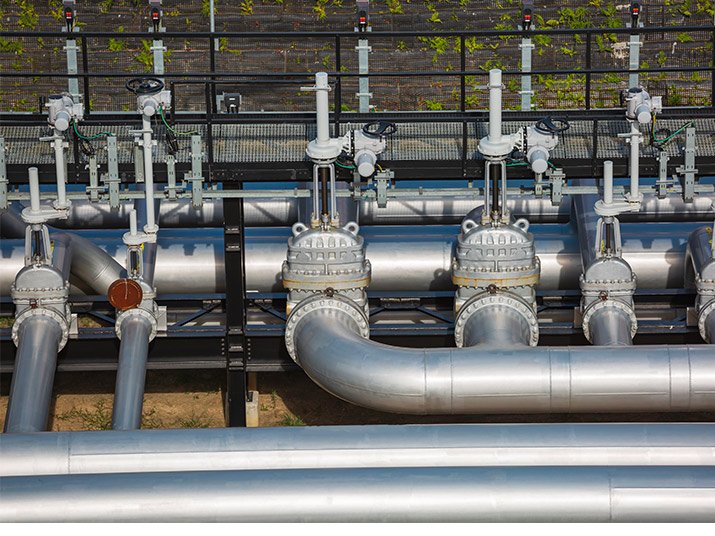An analytical technique, pipe stress analysis can ascertain how a piping system responds to changes in material, pressure, temperature, fluid, and support. The analytical approach can involve visual inspection, straightforward to intricate manual calculations, or a computer model. Computer models can range from simple finite element models (FEM) to complex 1-D beam elements. Pipe stress analysis consultants use various computational techniques like finite element analysis (FEA) to study piping behavior in real-world conditions and stresses.
Accurate and thorough pipe stress analysis cannot be performed without a deep understanding of the pipe stress analysis software and techniques, different pipe strains, the procedure, and other associated issues.
Read this article to learn the various factors contributing to pipe stress and how pipe stress analysis consultants can help improve overall stability in various use cases.
When is Pipe Stress Analysis Necessary?

Pipe stress analysis ensures that the stresses in the piping system are within the permitted limits and adhere to applicable rules and standards. This implies that pipe stress analysis work is a necessary part of the design stage for every new piping system.
Pipe Stress Analysis can be Conducted To:
1. Examine and consider thermal expansion and ensure the pipe system is flexible enough to accommodate it.
2. Calculate pipe stress to help with pipe support selection.
3. Verify that any loads on supporting structures are appropriate and safe.
4. Protect the pipe system from any natural calamities, like earthquakes.
5. Maintain the piping-linked equipment nozzle loads inside the permitted limits while referring to the applicable standards, such as the American Society of Mechanical Engineers (ASME) B31.1 Power Piping, ASME B31 Code for Pressure Piping, and other codes published by the American National Standards Institute (ANSI) and National Fire Protection Association (NFPA).
6. Study the effects of harsh environments, like hot or cold temperatures, persistently strong winds, or the possibility of earthquakes, on piping systems.
7. Switch over installations from above-ground to underground systems.
8. Determine the use of medium or large-sized pipes according to their configuration, operation, and flexibility.
In some cases, additional pipe stress studies may be necessary for installed piping systems.
Engineers may occasionally have to deal with dynamic issues in piping as systems evolve, including an increase in mechanical or acoustic vibration. Pipe stress analysis is crucial to ascertain whether those increases endanger the piping system’s structural or functional integrity.
Types of Pipe Stresses
Piping systems are susceptible to various stresses based on the environment, installation, and function. Here are the 5 main pipe stresses that must not be neglected:
1. Hoop Stress
Pressure applied to the pipe from the inside or the outside causes hoop stress. Hoop stress is consistent along a particular length of pipe since the piping system is subjected to a constant amount of pressure. Hoop stress may vary depending on wall thickness and diameter throughout the system.
2. Axial Stress
Sometimes, the pipe’s limited axial development causes axial tension. Thermal expansion, pressure expansion, and applied forces often contribute to axial growth.
Under certain conditions, composite piping, such as a fiber-reinforced pipe (FRP) or a plastic pipe, will show visible growth of up to 2 to 3 inches over 100 feet (200 to 300 psi). Pressure-induced axial development in steel-pipe growth is negligible for lengths over 100 feet and is usually disregarded.
3. Bending Stress
The tension brought on by applying body forces to the piping is known as bending stress. The pipe’s medium weight, concentrated masses (flanges, valves), sporadic forces (seismic, wind, thrust loads), and forced displacements brought on by growth from nearby piping and equipment connections are all examples of body forces.
4. Torsional Stress
The resultant stresses brought on by the rotational movement around the pipe’s axis and body forces are known as torsional stress. However, most piping rules disregard the effects of torsion because a piping system will most likely fail due to bending before torsion stress.
5. Fatigue Stress
Continuous cycling of the strains inherent in the pipes results in fatigue stress. For instance, turning on and off a water faucet all day will result in low fatigue stress due to the pressure being released and then building up. The cycling of a steam turbine from low to high pressure/temperature in power-cycle applications is also an example of fatigue stress.
Some common causes of fatigue stress in piping systems are:
1. Pressure.
2. Temperature.
3. Vibration caused by rotating machinery, flow, or both.
4. Sporadic loads.
How Pipe Stress Analysis Consultants Can Solve the Problem
Finite element analysis is an efficient technique that experts use to solve pipe stress problems. The analysis is done with the aid of finite elements and computer codes.
2D fabrication drawings and 3D solid modeling designs help study the piping system from the inside out. The models are then subjected to simulated stresses that are replicated via FEA software. The simulation helps analyze the viability of the piping system and its design.
Using FEA, experts validate the design using various load conditions and computer-aided design (CAD) techniques. Complex mathematical models are also used to determine shear stress and tensile compression.
These simulations or models are very beneficial for visually depicting the stress distribution. They demonstrate which parts and assemblies experience stress.
Over-stressed areas are studied with new technical geometries or stronger materials. With the derived data, field knowledge, and experience, pipe stress analysis consultants can determine which areas require improvement.
Final Notes
Having a team of professionals is beneficial in a field where efficiency, accuracy, and safety are paramount. Mechartes’ reputed pipe stress analysis consultants and FEA experts can accurately analyze various industry piping systems.
With 5000+ completed projects and over 15 years of experience, Mechartes can be your one-stop solution to help enhance your pipeline design.
Download their free eBook on piping stress analysis in buildings. You can also get in touch with us today!


 Share
Share  facebook
facebook